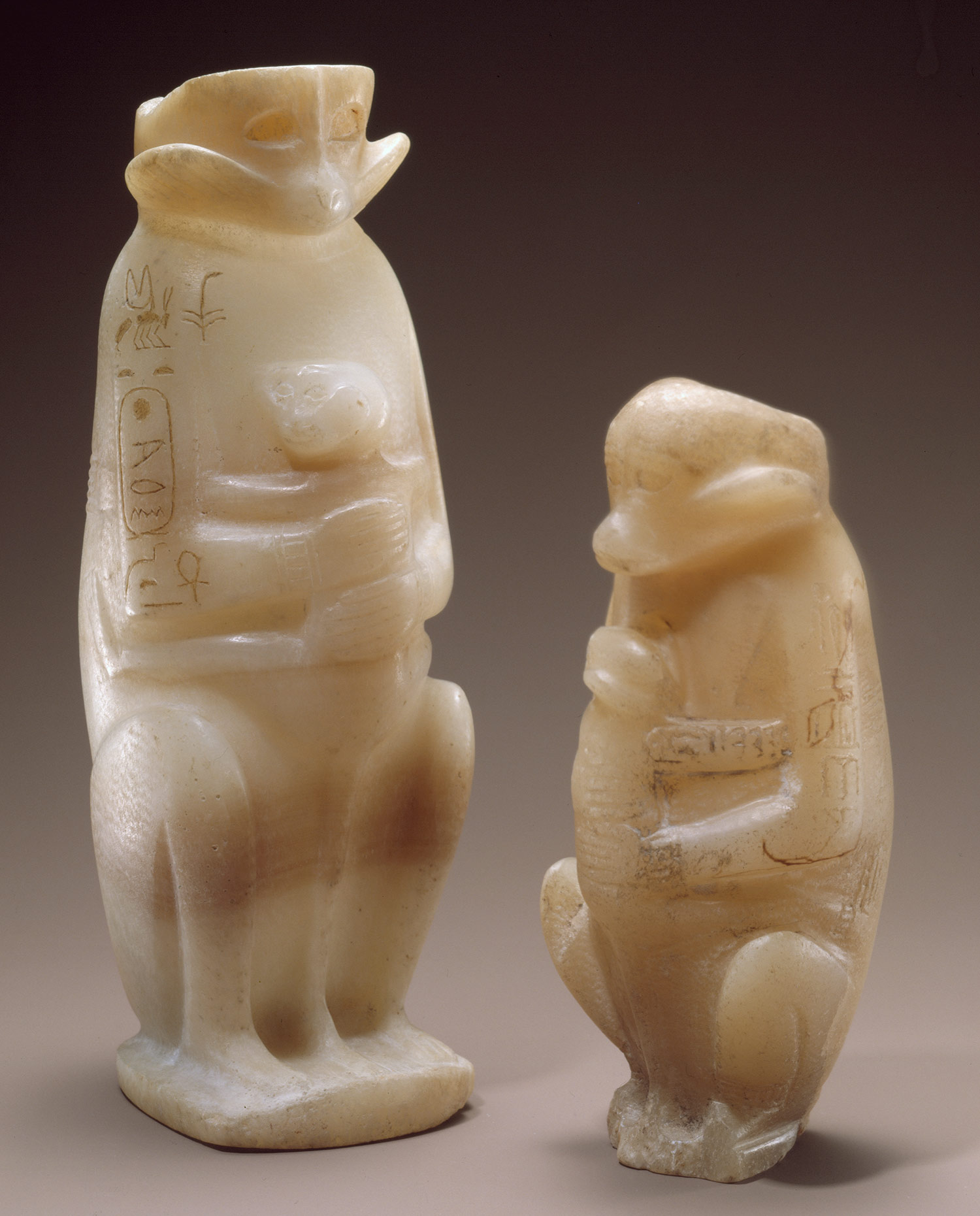These cosmetic vessels were intended to hold some sort of perfumed
oil. The form, depicting a mother monkey holding her baby against her
chest, is related to the contents of the jars. Monkeys came to Egypt
through trade with countries to the south along the Red Sea coast and in
what are now Sudan and Ethiopia. These areas also provided spices and
other ingredients that the Egyptians mixed with cosmetic oils and
ointments. The maternal image was a symbol of rebirth and renewal,
recurring concepts in the Egyptian belief system.
The vases were undoubtedly made in the royal workshops of Dynasty 6, toward the end of the Old Kingdom. The larger vase is inscribed with the name of Merenre I. The smaller one had the name of his father, Pepi I, who seems to have presented it to a female official as a gift commemorating his thirty-year festival.
Although they were made by sculptors working within a decade of one another, using the same medium and interpreting the same theme, these vases show remarkable variation. In the larger jar, the mother monkey sits stiffly upright, her arms and legs rendered in a very abstract, linear fashion. The smaller example is livelier, with a more naturalistic treatment of the mother animal bending over her infant. In spite of the difference in style, both vessels indicate the keen interest and observation with which ancient Egyptian artists represented the natural world around them.

The vases were undoubtedly made in the royal workshops of Dynasty 6, toward the end of the Old Kingdom. The larger vase is inscribed with the name of Merenre I. The smaller one had the name of his father, Pepi I, who seems to have presented it to a female official as a gift commemorating his thirty-year festival.
Although they were made by sculptors working within a decade of one another, using the same medium and interpreting the same theme, these vases show remarkable variation. In the larger jar, the mother monkey sits stiffly upright, her arms and legs rendered in a very abstract, linear fashion. The smaller example is livelier, with a more naturalistic treatment of the mother animal bending over her infant. In spite of the difference in style, both vessels indicate the keen interest and observation with which ancient Egyptian artists represented the natural world around them.





No comments:
Post a Comment